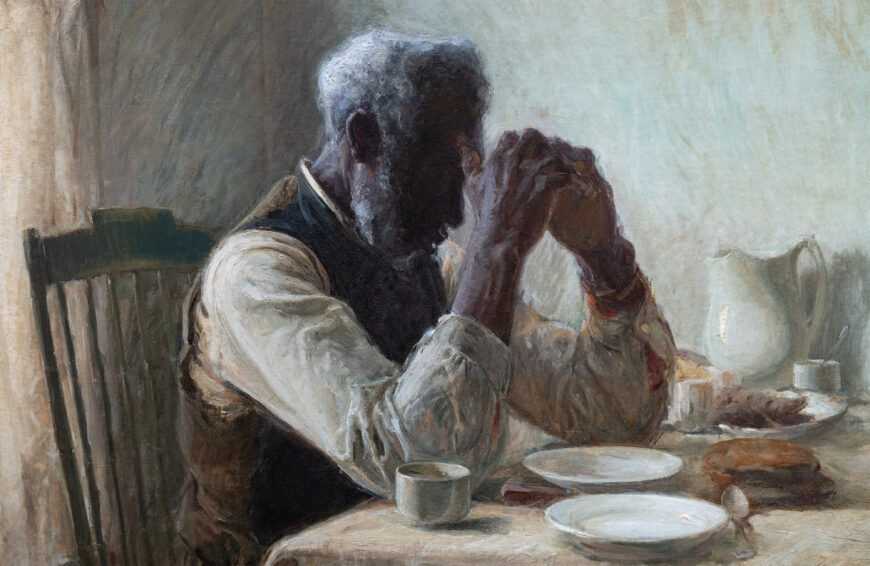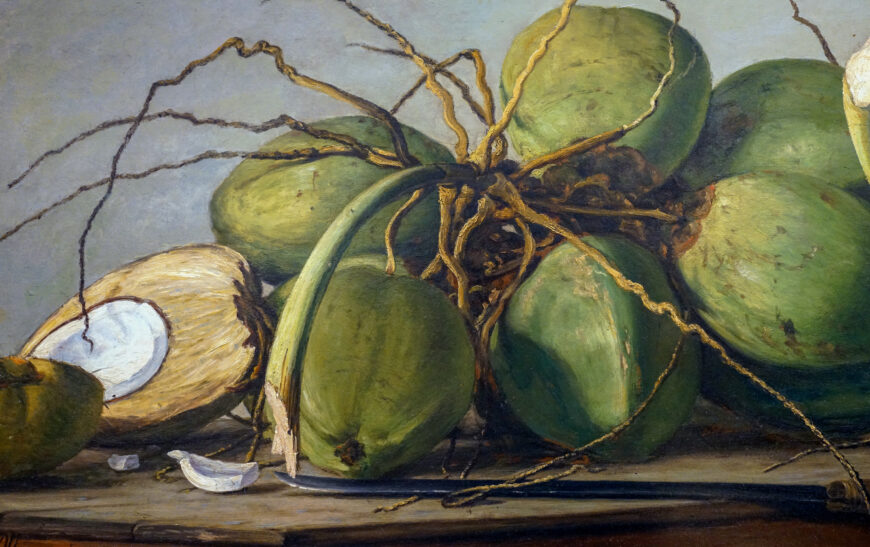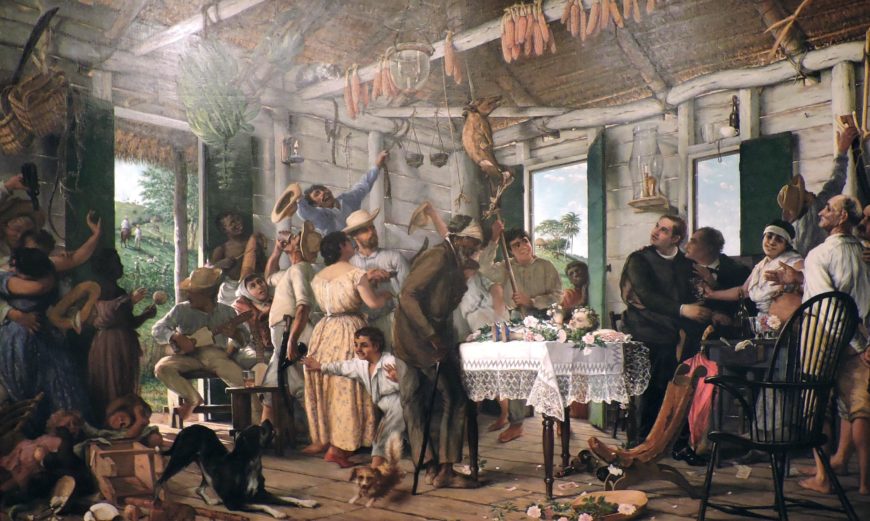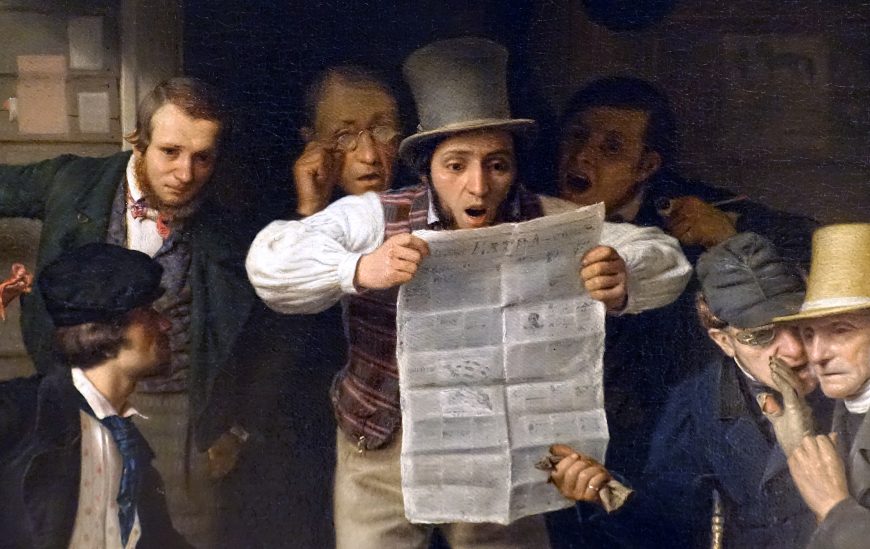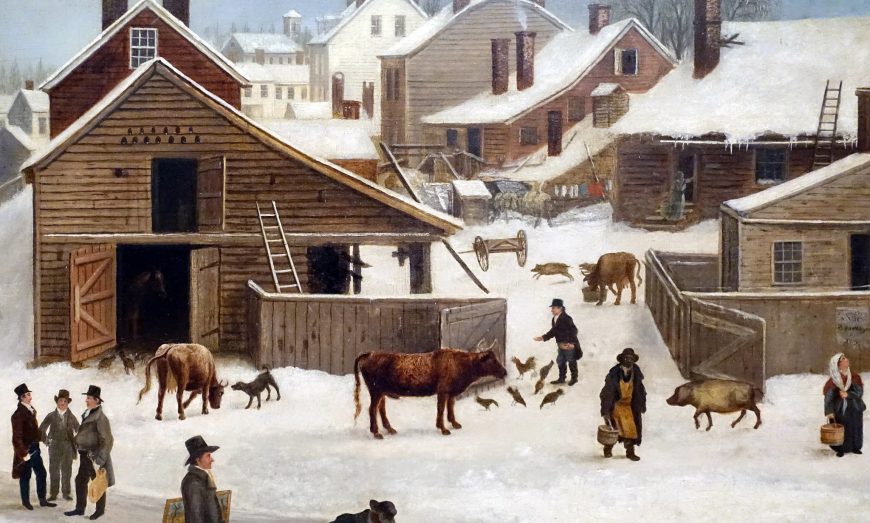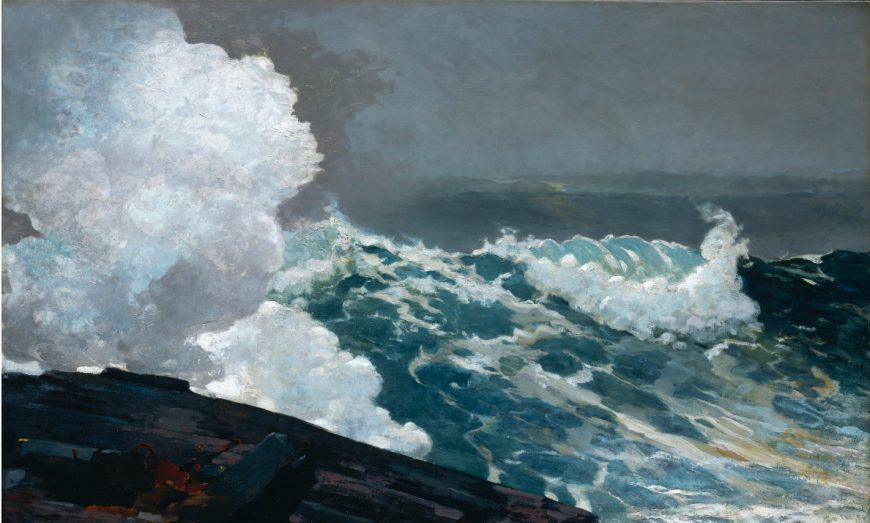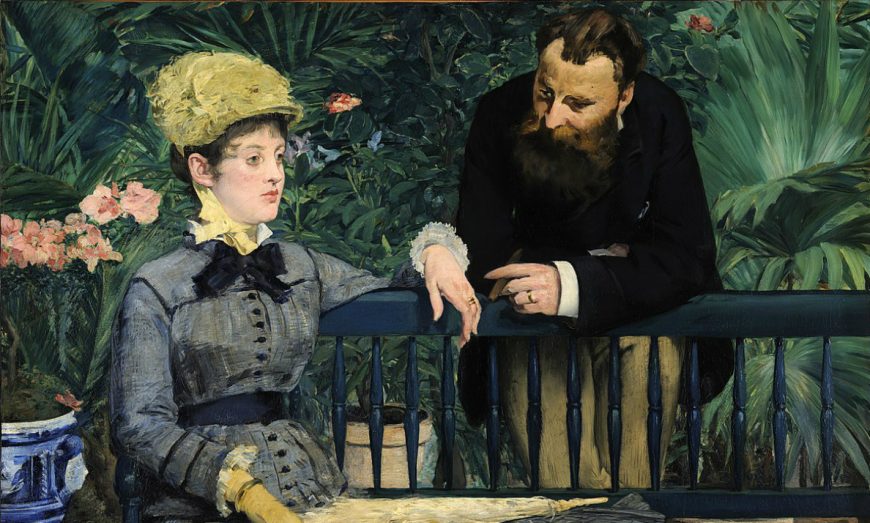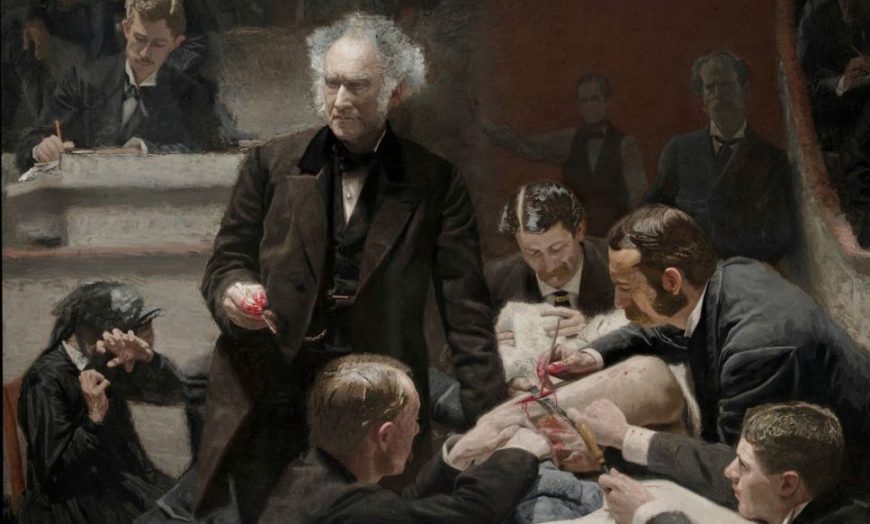Painted during Reconstruction, this sentimental watercolor depicts the hope of transformation and possibility.
Winslow Homer, Taking Sunflower to Teacher, 1875, watercolor on paper, 7-5/8 x 6-3/16 inches (Georgia Museum of Art)
[0:00] [music]
Dr. Beth Harris: [0:05] We’re in the Georgia Museum of Art, looking at a small watercolor by the American painter Winslow Homer called “Taking Sunflower to Teacher.” It dates to 1875, so we’re in the last years of Reconstruction.
Dr. Jeffrey Richmond-Moll: [0:22] Beginning in 1867 with the passage of the Reconstruction Act, the federal government is trying to reform and reconstruct the American South following the end of the Civil War and the dismantling of the American Confederacy.
Dr. Harris: [0:36] We have all of these attempts by the federal government to ensure the rights of formerly enslaved people.
Dr. Richmond-Moll: [0:43] The government is passing amendments to the Constitution to ensure the rights of newly freed African Americans, especially in the South.
[0:53] You have the 13th Amendment, which is the abolition of slavery, the 14th, which provides equal protection under the law to all citizens of the United States and essentially establishes citizenship for this population, and then the 15th Amendment, which provides voting rights to all male citizens. So now, male African Americans can vote.
[1:17] Homer here is creating a picture that attempts to portray this new potential for African Americans in this country. You have this boy with the sunflower that he’s bringing to his teacher. He’s pictured him in these tattered clothes, which are a way of showing his poverty, his marginalization, this former self that he, through his education, has the potential to transcend.
[1:46] And it’s that butterfly that touches down on his shoulder, which is a symbol of metamorphosis, of this potential to transform.
Dr. Harris: [1:54] I think Homer expresses all of that potential so beautifully in the painting. The figure looks slightly downward. He folds his hands in front of his body and he looks uncertain. Almost as though he’s looking toward his future, but not sure what it will bring.
[2:12] The symbolism of the sunflower, this idea of blossoming, of opening, of following the sun, of growth and development, the butterfly, this idea of transformation, of a figure whose life is beginning and opening up.
Dr. Richmond-Moll: [2:28] This boy is crossing his arms. He’s not crossing it in the typical way you would expect. It’s almost as if his hands are crossed at his wrists, which references this past of shackles, of bondage, of imprisonment in slavery. Now, the wrists are crossed but without chains.
Dr. Harris: [2:48] It is somewhat patronizing. But it’s also very sympathetic, and Homer avoids any of the stereotypes that were so common in imagery of the time.
Dr. Richmond-Moll: [2:57] It is a very humanizing picture. It shows a psychological complexity. That dignity that he gives to this subject is quite different from the caricature of African Americans in this period.
Dr. Harris: [3:12] What this watercolor does, though, is suggest a very bright future. But we know that during this period, access to education, access to voting, to the rights of citizenship, had to be enacted by the federal government. They were not things that came easily or naturally to the South.
Dr. Richmond-Moll: [3:30] You have African-American communities who are taking up the project of education for themselves. Taxing their own communities to establish schoolhouses and to employ teachers and to afford themselves the possibilities of education.
[3:45] Yet local governments and state governments are directly opposing those efforts. Whether that’s through judicial means or through vigilante violence and self-enacted justice.
Dr. Harris: [3:57] It is such a sentimental image. It’s hard to look at this and not think about how sweet he looks and to feel sympathy.
Dr. Richmond-Moll: [4:07] It’s a culture of sentimentality, especially in relation to slavery and the cause of abolition. You think of people like Harriet Beecher Stowe and “Uncle Tom’s Cabin” and how this literary tradition of sentimentality is at once dignifying and humanizing. But is also a strategy for the cause of abolition in the North.
Dr. Harris: [4:30] The reference to “Uncle Tom’s Cabin,” to Harriet Beecher Stowe, is a really good one. This idea of using sentimentality to support the cause of abolition and emancipation.
[4:39] [music]



